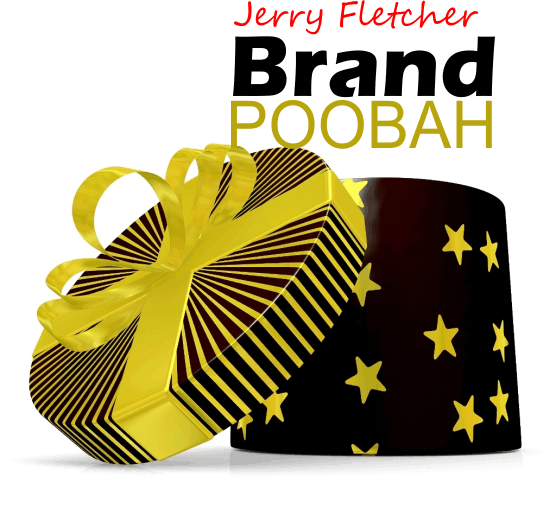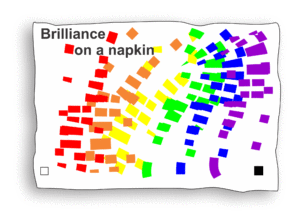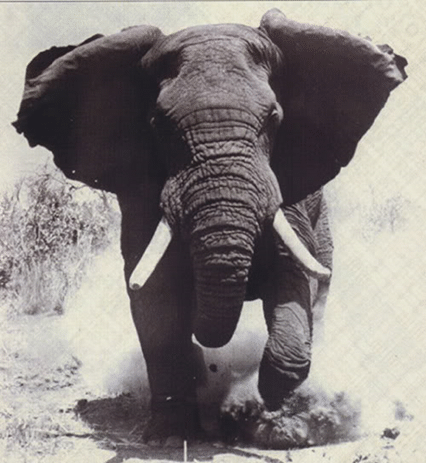 A friend once described the Platte river (near Denver, Colorado) as a mile wide and an inch deep.
A friend once described the Platte river (near Denver, Colorado) as a mile wide and an inch deep.
Your brand might be like that.
You have a choice to make:
- Maintain your broad coverage
- Dive deep into a select audience segment.
- Try a little of both
The broad brush
Your target may be portrayed in broad brush strokes at the beginning. Most entrepreneurs believe that broad appeal will get them the most customers.
Maybe.
More often the broad appeal helps those who will become their best customers/clients find the company, product or service. That gives the appearance of a brand that works. But if you don’t regularly probe the information your customers/clients are willing to give you the profiles of your best purchasers will not be revealed.
Edge on
How can you tell? The rule of thumb is that the more niched you are, the better off you’ll be. Generally, that is true. To evaluate your situation, look at the depth of what you know about your client base, the percentage of your sales that cluster in one group, initial and repeat purchases as well as the estimated life time value (LTV) of the individuals as well as where you want to take the business.
The more carefully you describe your avatars, verify them with market research and, over time, add details to their portraits the better you will understand the kind of people that can make you successful. If you’re well-funded, that research can be done by a specialist firm. If you’re little guy, under-funded, or a start-up you may have to do personal interviews to get a handle on that better picture.
What works? I’ve been successful with all three of the choices. More successful with a deep dive. Most successful with the combination and carefully watching the metrics.
Deep Art
The more detailed portrayal of your ideal customer/client the greater the probability of enhanced profits. True, there may be fewer. But each will be worth more in most cases. Repeat purchases are the primary reason as well as a tendency to accept higher prices. The fact that you have found them and are personalizing your approach establishes a large emotional difference from competitors. It makes your brand unique.
Detailed knowledge of two or three groups can not only add to your profits, it can extend the life of your business. A financial planner might open the doors and quickly find that her primary customers are Baby Boomers but that they are referring their children who are in the cohort known as Boomers II or Generation Jones born between 1955 and 1965. They, too, refer other youngsters, born between 1966 and 1976 (Generation X).
The planner may find that Generation X is significantly different from the older clients. But her only way to build the business long term is to understand the differences, speak their language and make the picture familiar to them.
The cohorts are often put into “Buckets.” You could easily identify the three noted above. But the Brand oriented planner will take it a step further using automation software that allows you to “tag” each contact with a full array of ways to sort them into segments within the groups. Here are just a few:
- Demographics (Age, sex, income, education, housing etc.)
- Psychographics (Observable personal behavior)
- Engagement (The degree they respond to your offers)
- Purchase Behavior (purchases, repeat purchases frequency, recency)
- Satisfaction (Reviews and testimonials)
Wade in
Keep track of what you learn about your customers/clients. The depth of your knowledge will impact the value of your business every single day.
 Jerry Fletcher is a sought-after International Speaker, a beBee ambassador, founder and Grand Poobah of www.BrandBrainTrust.com
Jerry Fletcher is a sought-after International Speaker, a beBee ambassador, founder and Grand Poobah of www.BrandBrainTrust.com
His consulting practice, founded in 1990, is known for Trust-based Brand development, Positioning and business development for independent professionals on and off-line.
Consulting: www.JerryFletcher.com
Speaking: www.NetworkingNinja.com
DIY Training: www.ingomu.com













